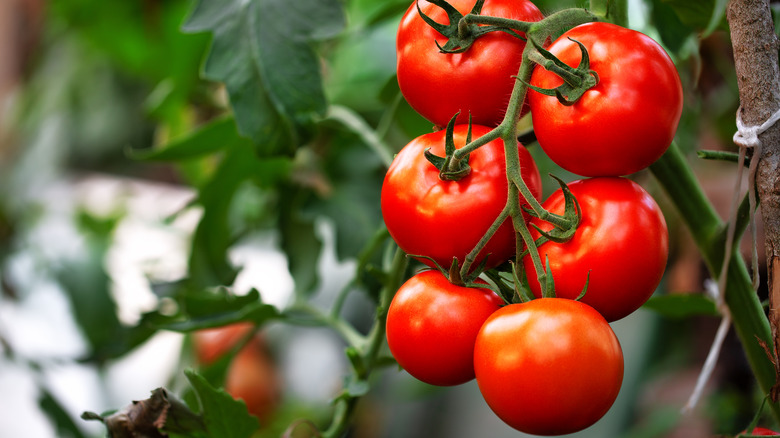Back in the 1500s, a strange fear began to spread across the upper classes of Europe. A new fruit from the New World bright red, juicy, and fragrant was causing whispers of danger. The tomato, which had just made its way to Europe from the Americas, quickly gained a dark reputation. Whenever members of the wealthy class ate this fruit, they sometimes fell ill or even died shortly after.
Rumors started to grow. Could this strange red fruit be poisonous? Could it be cursed? The fear took hold, and soon, tomatoes were viewed with suspicion. For centuries, they were kept at a distance from elite dinner tables and grew to be known as “poison apples.”
But the tomato was innocent. The real culprit was something far more familiar hidden right beneath the meals themselves.

The Deadly Role of Pewter Plates
To understand the tragic misunderstanding, we have to look not at what people were eating, but what they were eating off of. In the 16th century, the wealthy often dined from elegant pewter plates. Pewter, an alloy made primarily from tin, commonly included lead to improve its strength and malleability. And that lead was slowly poisoning the rich.

Here’s where the chemistry comes in: tomatoes are highly acidic. When the fruit’s natural acid came into contact with the lead-based pewter, it caused the lead to leach out into the food. So, every time the elite enjoyed a tomato salad or sauce, they were unknowingly ingesting toxic levels of lead.
Symptoms of lead poisoning headaches, abdominal pain, cognitive decline, even death soon followed. Since no one at the time understood the connection between lead and illness, the tomatoes took the blame.
Video:
Why People Thought TOMATOES Were DEADLY for 200+ Years (Shocking Truth!)
How the Poor Avoided the Danger
Ironically, it was the poorer classes who remained safe from this culinary tragedy. Unlike the wealthy, who displayed their status with shiny pewter tableware, most lower-income families used simple wooden plates and bowls. These wooden dishes posed no risk of chemical reaction with the tomatoes.
So while aristocrats swore off the mysterious red fruit, many common people continued to eat it with no side effects. To them, the tomato was just another flavorful addition to the table not a deadly trap.
This strange divide persisted for centuries, separating the classes not just by wealth but by their relationship with one of the world’s most versatile ingredients.

Tomatoes Remain Misunderstood for Centuries
The tomato’s reputation was hard to shake. Even as botanical science advanced and tomatoes were proven safe to eat, many Europeans still held on to their skepticism well into the 1700s. Some religious leaders even warned against the tomato, claiming its bright red color symbolized sin or evil.
Video:
History Of The Tomato – How The Tomato Took Over The World
It wasn’t until the 19th century over 300 years after tomatoes first arrived in Europe that the fruit finally began to gain widespread acceptance. Italian chefs were among the first to fully embrace it, incorporating tomatoes into sauces, soups, and pasta dishes that would become national staples.
A Redemption Story Rooted in Science
What finally cleared the tomato’s name? Scientific progress. As chemistry and food science evolved, the dangers of lead and the effects of acidity on metals became better understood. Researchers realized that tomatoes were not to blame they were victims of circumstance.
As lead was phased out of dinnerware and replaced with safer materials like porcelain and glass, the health risks disappeared. And slowly, the public perception of the tomato shifted from sinister to savory.
Tomatoes transformed from feared fruit to a beloved kitchen essential. Today, it’s impossible to imagine European cuisine especially Italian, French, and Spanish without them. From pizza and pasta to gazpacho and ratatouille, the tomato has found a permanent home on tables around the world.

Conclusion: Lessons from the Tomato’s Journey
The tomato’s long journey from suspected killer to culinary hero is a fascinating lesson in how fear, misinformation, and class differences can shape the way we view food. It also shows how science can eventually set the record straight even if it takes a few hundred years.
So the next time you slice into a ripe tomato, remember its remarkable past. That bright red fruit on your plate carries with it centuries of misunderstanding, rediscovery, and redemption. And all of it started with a simple but deadly mistake involving the dishes it was served on.



